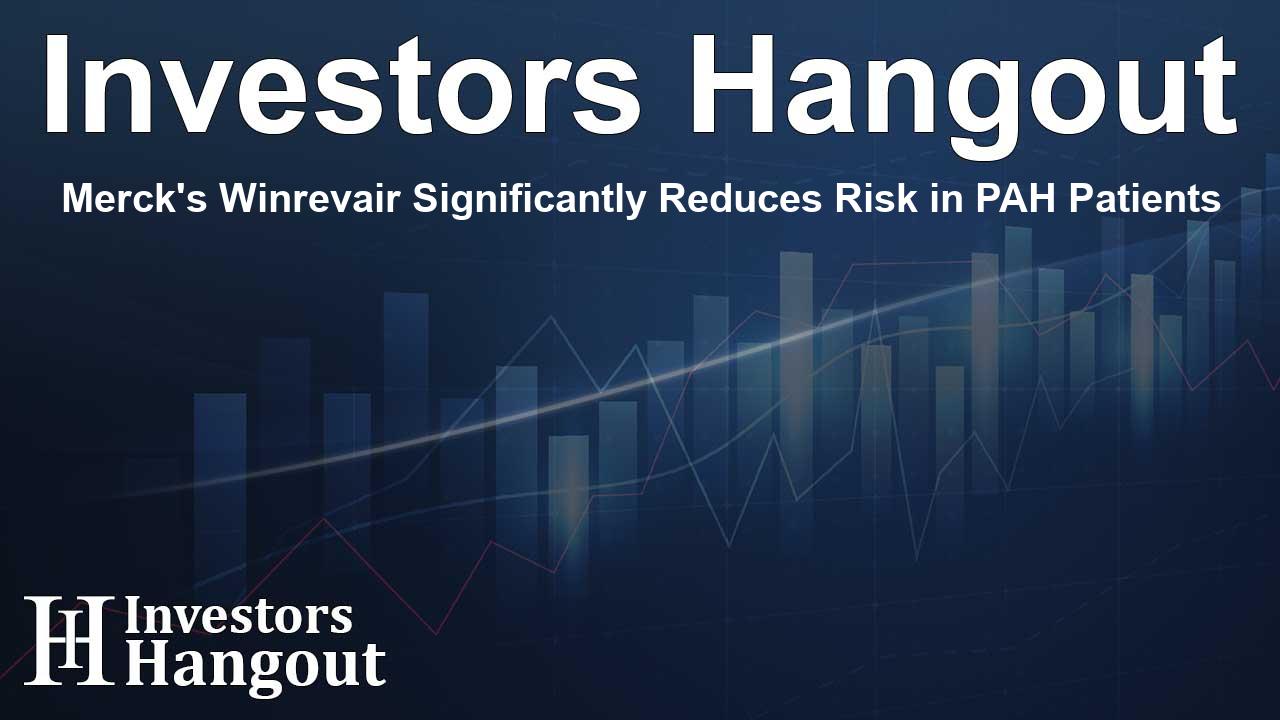Merck's Winrevair Significantly Reduces Risk in PAH Patients

Merck's Clinical Breakthrough with Winrevair
Merck & Co. Inc. (NYSE: MRK) has made significant strides in treating pulmonary arterial hypertension (PAH) through its groundbreaking drug, Winrevair (sotatercept-csrk). Recent findings from a Phase 3 clinical trial known as HYPERION reveal that Winrevair drastically reduces the risk of clinical worsening by 76%. This impressive statistic showcases the potential of the therapy for patients diagnosed with PAH who are at an intermediate or high risk of disease progression.
Understanding the Study Results
The results from the HYPERION trial have provided compelling evidence regarding the effectiveness of Winrevair. The study compared Winrevair with a placebo, both administered alongside standard therapies, focusing on adult patients classified under WHO Group 1 (pulmonary arterial hypertension) functional classes II or III. The composite endpoint measured included a range of serious events, such as all-cause mortality, unexpected hospitalizations, lung transplantation, and overall deterioration of the disease.
Impact of Winrevair on Patient Outcomes
The study indicated that only 10.6% of patients treated with Winrevair encountered significant clinical worsening compared to a notably higher 36.9% seen in the placebo group. This provides a strong indicator of Winrevair's efficacy across various predefined subgroups of patients.
Safety Profile and Duration of Follow-Up
In terms of safety, the profile of Winrevair remained stable and aligned with findings from earlier studies, giving additional confidence in its use among patients. Notably, the duration of monitoring showed that individuals receiving Winrevair had a median follow-up of 14.6 months, compared to 11.5 months for those on the placebo.
Adverse Events Analysis
Adverse events were reported at a rate of 89.4% in the Winrevair group, slightly lower than the 90.0% in the placebo cohort. Serious adverse events were also comparable, standing at 24.4% for Winrevair versus 28.1% for placebo.
Significant Improvement Metrics
Adding to the promising findings, the trial highlighted that 29.4% of patients on Winrevair met the criteria for multicomponent improvement. This includes enhancements in six-minute walk distance (6MWD), NT-proBNP levels, and overall WHO functional classification. For those in the placebo group, the corresponding figure was 14.6%, showcasing a significant advancement for those treated with Winrevair.
Additional Secondary Endpoints and Their Implications
A further secondary endpoint revealed that 60.1% of Winrevair recipients were able to sustain or reach a low REVEAL LITE 2 score at Week 24, compared to 47.9% in the placebo realm. However, the therapy did not achieve statistical significance concerning maintaining a low-risk status as outlined by the simplified French risk score (SFRS).
Insights from Early Trial Termination
This year, the HYPERION trial was concluded prematurely, following a comprehensive examination of Winrevair's clinical data. This early termination allowed all participants access to Winrevair through the SOTERIA open-label extension study, further expanding opportunities for treatment.
Current Market Dynamics
Reflecting on the present market, MRK stock has seen a slight decline, currently sitting at $78.44 during premarket trading sessions. Investors are keenly monitoring developments as Merck continues to establish its stance in the competitive pharmaceutical landscape.
Frequently Asked Questions
What is Winrevair used for?
Winrevair is a medication used to treat pulmonary arterial hypertension and has shown significant efficacy in reducing clinical worsening risks.
How does Winrevair compare to placebo?
Clinical trials have demonstrated that Winrevair reduces the risk of adverse clinical events by 76% compared to a placebo, marking a significant improvement for patients.
What side effects are associated with Winrevair?
The safety profile of Winrevair has been consistent, with common adverse events reported but generally manageable, similar to previous studies.
How long do patients typically follow the treatment?
In the HYPERION trial, patients treated with Winrevair had a median follow-up duration of 14.6 months.
What are the implications of the recent study findings?
The findings reinforce Winrevair's promising role in treatment strategies for pulmonary arterial hypertension and highlight its potential to enhance patient outcomes significantly.
About The Author
Contact Henry Turner privately here. Or send an email with ATTN: Henry Turner as the subject to contact@investorshangout.com.
About Investors Hangout
Investors Hangout is a leading online stock forum for financial discussion and learning, offering a wide range of free tools and resources. It draws in traders of all levels, who exchange market knowledge, investigate trading tactics, and keep an eye on industry developments in real time. Featuring financial articles, stock message boards, quotes, charts, company profiles, and live news updates. Through cooperative learning and a wealth of informational resources, it helps users from novices creating their first portfolios to experts honing their techniques. Join Investors Hangout today: https://investorshangout.com/
The content of this article is based on factual, publicly available information and does not represent legal, financial, or investment advice. Investors Hangout does not offer financial advice, and the author is not a licensed financial advisor. Consult a qualified advisor before making any financial or investment decisions based on this article. This article should not be considered advice to purchase, sell, or hold any securities or other investments. If any of the material provided here is inaccurate, please contact us for corrections.
